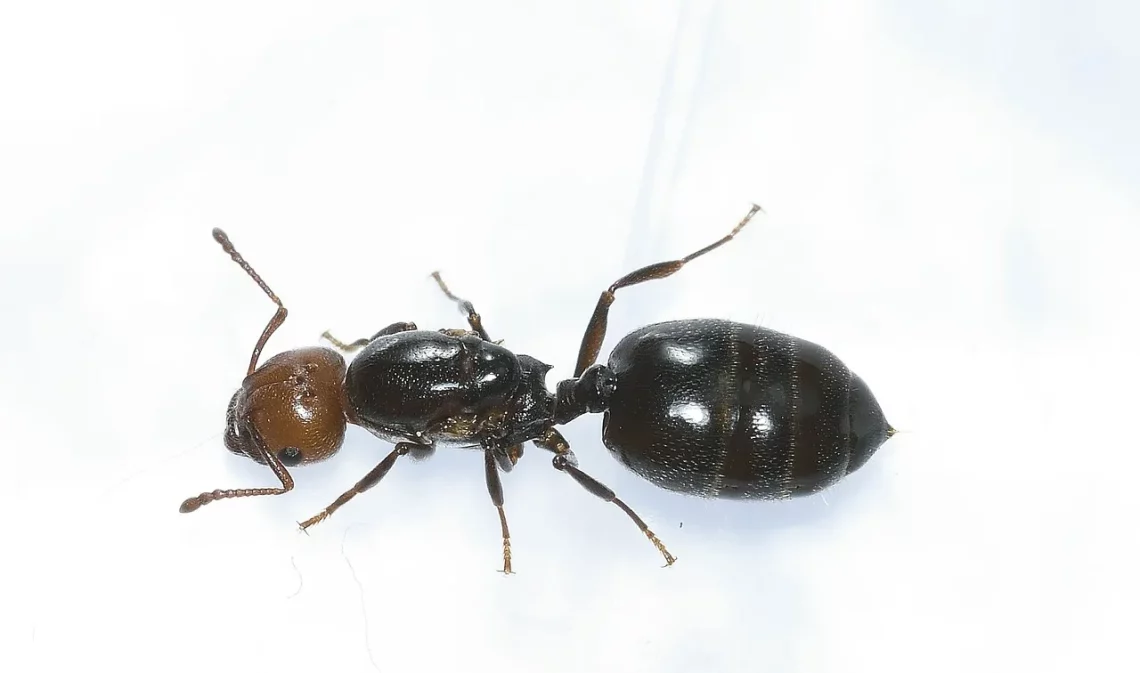
Understanding Little Black Ant Bites: Symptoms and Remedies
Understanding the behavior and impact of little black ants is crucial for anyone who encounters these tiny yet intricate creatures. Known scientifically as Monomorium minimum, little black ants are often seen in homes and gardens, where they can become a nuisance. These ants are typically small, measuring about 1/16 to 1/8 of an inch in length, and are characterized by their shiny black bodies and a distinctive segmented appearance. While they play a role in the ecosystem, including aiding in the decomposition of organic matter, their presence can lead to unwanted bites when they feel threatened.
Understanding their behavior is essential for effective management. Little black ants are social insects that live in colonies, which can range from a few hundred to several thousand individuals. They are particularly attracted to sugary substances and can invade kitchens, pantries, and other areas where food is accessible. Although their bites are not typically harmful, they can cause discomfort and irritation. This makes it important for individuals to recognize the symptoms of bites and understand how to alleviate them, as well as how to prevent further encounters with these tiny pests.
With a better understanding of little black ants, their bites, and the appropriate remedies, you can navigate interactions with these insects more effectively.
Identifying Little Black Ant Bites
Identifying little black ant bites can sometimes be challenging due to their small size. Typically, the bites are not as severe as those of larger ants or other insects. Instead, they usually manifest as small red welts on the skin that may itch or burn slightly. The initial reaction often resembles that of a mosquito bite, with localized swelling and redness.
When a little black ant bites, it uses its mandibles to grasp the skin and may inject a small amount of venom. This venom is not highly toxic, but it can cause a mild allergic reaction in sensitive individuals. In some cases, bites can become inflamed and lead to more noticeable discomfort.
It’s also essential to differentiate little black ant bites from those of other insects. For instance, flea bites tend to cluster together, while bedbug bites may cause more significant swelling and are often found in linear patterns. Little black ant bites, on the other hand, may appear singly or in small groups and are usually not accompanied by severe pain.
If you suspect that you have been bitten by little black ants, observing the bite site closely is crucial. If the area begins to show signs of infection, such as increased redness, warmth, or pus, it’s advisable to consult a healthcare professional.
Understanding the symptoms associated with little black ant bites can help you respond appropriately, reducing the likelihood of further irritation or complications.
Symptoms of Little Black Ant Bites
The symptoms of little black ant bites can vary from person to person, depending on individual sensitivity and allergic reactions. Generally, the immediate effects are mild and may include localized itching, redness, and slight swelling at the bite site.
Initially, you may experience a tingling sensation or a mild burning feeling when bitten. This is often followed by the development of a small red bump that can become itchy over time. For most individuals, these symptoms will resolve on their own within a few hours to a couple of days.
However, some people may experience more pronounced reactions. In cases of heightened sensitivity, the bite may cause significant swelling, and the surrounding area may become inflamed. This inflammation can lead to discomfort and an increased risk of secondary infections if the bite area is scratched excessively.
In rare instances, individuals may experience an allergic reaction to the venom, presenting symptoms such as hives, difficulty breathing, or swelling beyond the bite site. If any of these symptoms occur, it is crucial to seek immediate medical attention.
Recognizing the symptoms associated with little black ant bites is key to managing them effectively. While most bites are harmless and will heal without intervention, being aware of your body’s reactions can help you determine the best course of action and when to seek professional help.
Home Remedies for Little Black Ant Bites
When it comes to treating little black ant bites, several home remedies can provide relief from discomfort and promote healing. The first step is to clean the bite area thoroughly with soap and water to reduce the risk of infection. After cleansing, applying a cold compress can help alleviate swelling and numbing the area, providing immediate relief from itching.
Over-the-counter antihistamines can also be effective in reducing itching and swelling associated with insect bites. Medications such as diphenhydramine (Benadryl) can be particularly useful if you’re experiencing significant discomfort. Additionally, topical creams containing hydrocortisone or calamine lotion can soothe irritated skin and reduce inflammation.
Natural remedies can also be beneficial. For example, applying a paste made of baking soda and water directly to the bite may help neutralize the sting and reduce itching. Aloe vera gel, known for its soothing properties, can also be applied to the bite area for added relief.
Another effective natural remedy is honey, which has antibacterial properties and can help prevent infection. Applying a small amount of honey to the bite can promote healing and soothe irritation.
While these home remedies can significantly alleviate the discomfort associated with little black ant bites, it is important to monitor the bite for any signs of infection or allergic reaction. If the symptoms persist or worsen, consult a healthcare professional for further advice and treatment options.
Preventing Future Ant Bites
Preventing future encounters with little black ants requires a proactive approach to manage their presence in and around your home. One of the most effective strategies is maintaining a clean environment. Ants are attracted to food sources, so ensuring that food is stored properly in airtight containers can significantly reduce their attraction. Regularly cleaning countertops, floors, and areas where food is consumed can help eliminate any crumbs or spills that may entice these pests.
Another crucial aspect of prevention is sealing entry points. Inspect your home for cracks, gaps, or holes where ants might enter, particularly in areas around windows, doors, and foundations. Caulking these openings can deter ants from gaining access to your living space.
Additionally, you can employ natural deterrents to keep little black ants at bay. Substances such as vinegar, lemon juice, or essential oils like peppermint can be effective in repelling ants. Spraying a solution of vinegar and water around potential entry points can create a barrier that ants are less likely to cross.
For outdoor areas, keeping your yard tidy by removing debris, trimming plants, and managing compost piles can reduce the likelihood of attracting ants. If you have significant ant infestations, consulting with a pest control professional may be necessary to address the issue effectively.
By implementing these preventive measures, you can minimize the risk of future ant bites and maintain a more comfortable living environment.
—
**Disclaimer:** This article is for informational purposes only and should not be considered medical advice. If you have any health concerns or experience severe symptoms related to ant bites, please consult a healthcare professional for proper diagnosis and treatment.




